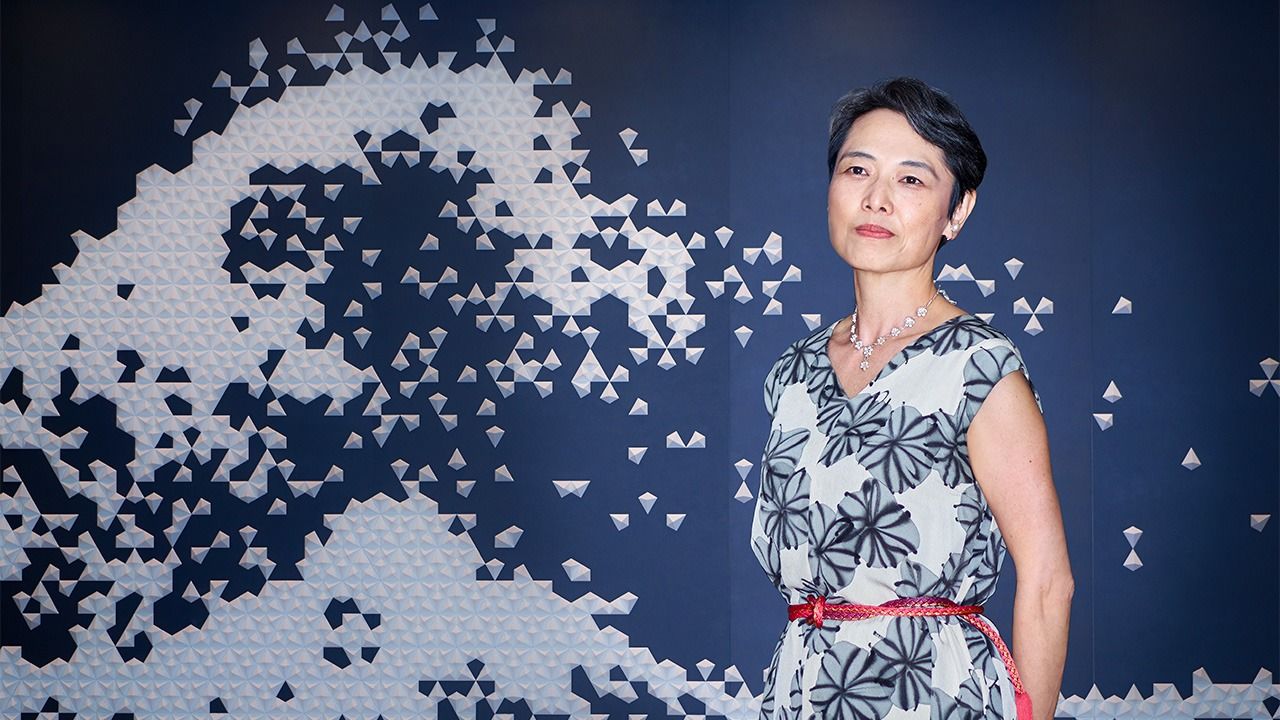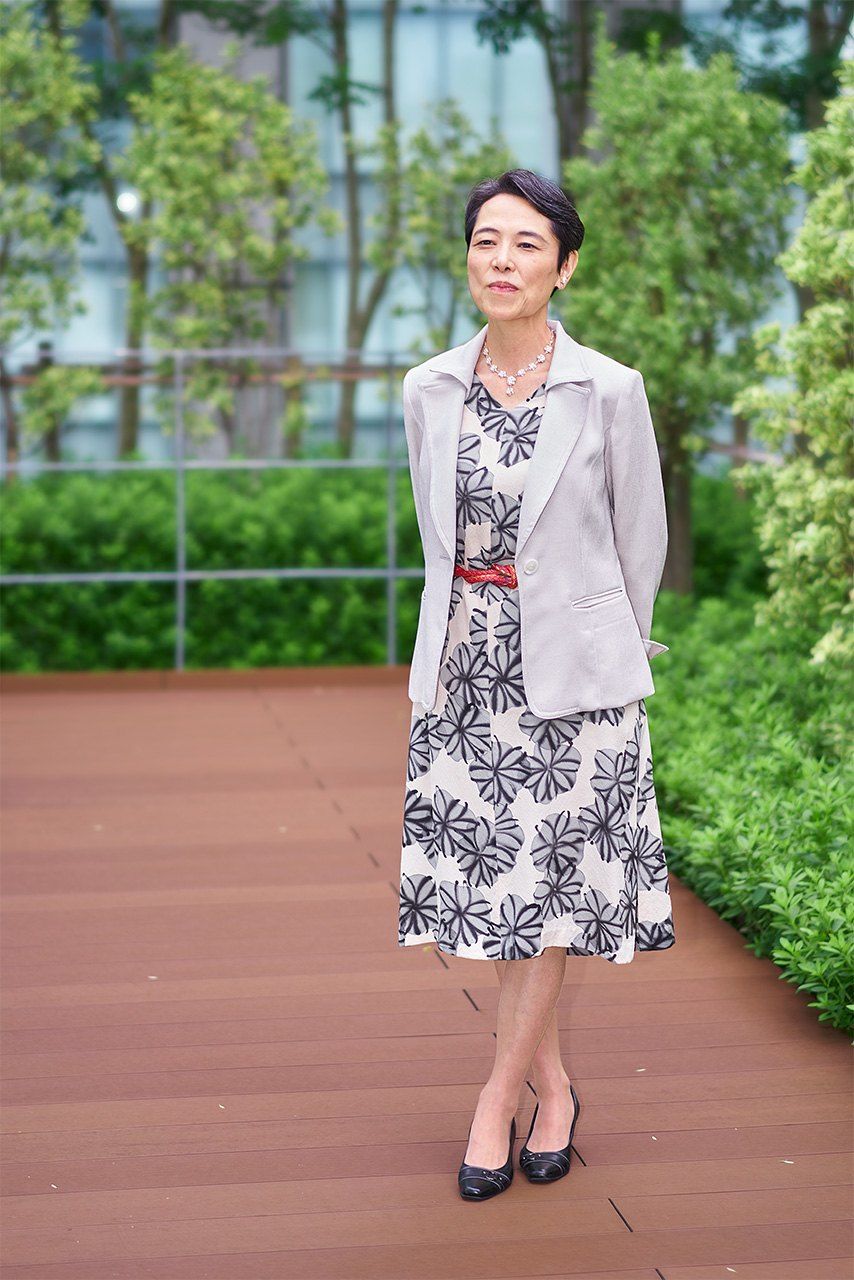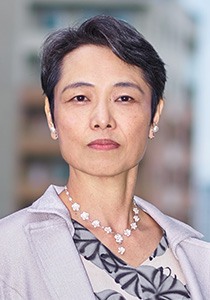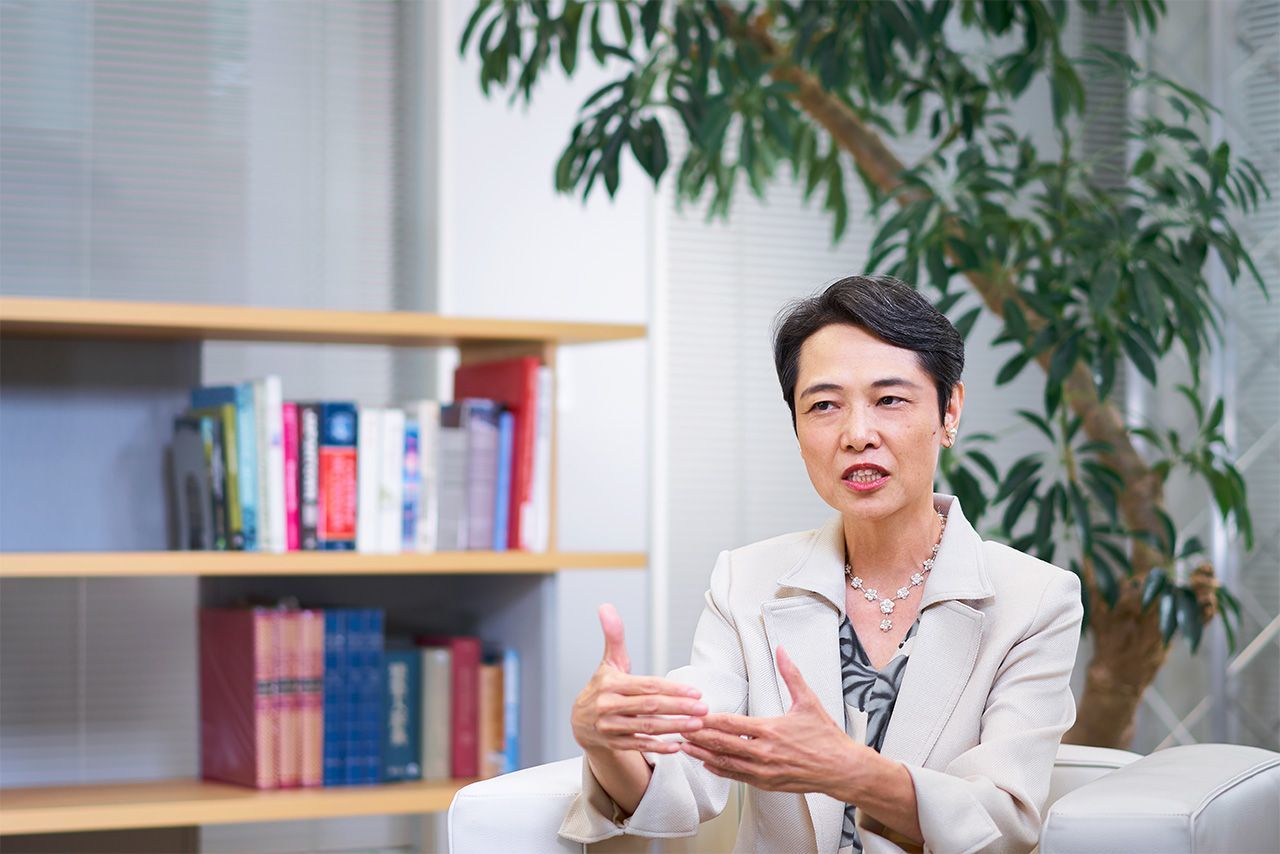
Madame Ambassador: Japanese Envoy to Paraguay Nakatani Yoshie Talks Diplomacy and Female Empowerment
Politics- English
- 日本語
- 简体字
- 繁體字
- Français
- Español
- العربية
- Русский
Nakatani Yoshie, Japan’s ambassador to Paraguay, brings a world of experience to her new post. A career diplomat, her credentials include standing on the frontlines of tough negotiations with the United States and European Union and serving as media liaison during the tense, four-month hostage crisis at the Japanese embassy in Peru in 1996. As the wife of a high-ranking Maritime Self-Defense Force officer and mother to two daughters, she has also met the immense challenge of balancing work and family, including taking her children with her on overseas postings.
Nakatani says she surprised friends and colleagues with her choice of marriage partner. She asserts she wed fully aware that the couple’s jobs would keep them on the move and that settling down was “never going to be part of the equation.” As difficult as things were at times, she insists she would not have it any other way. “I feel extremely blessed to be able to follow my dream of being a diplomat.” Husband Ōtsuka Umio, recently retired from the SDF, is now sharing in that dream with his appointment as ambassador to Djibouti. As usual, the pair are glad to answer the call of duty, even if it keeps them on opposite sides of the globe.
Diplomatic Dreams
Growing up in Hiroshima Prefecture, Nakatani early on developed a fascination with foreign countries, something she attributes to television series like the 1970 Atenshon purīzu (Attention Please), which portrayed the adventures of an international flight attendant for Japan Airlines, and the long-running travel program Kanetaka Kaoru sekai no tabi (Kanetaka Kaoru: The World Around Us). Harboring hopes of similarly traversing the globe as an air hostess, she took to studying English. Later, around the time she began thinking about university, she expanded her language learning to include Spanish.
She admits that, unlike with English, her motives in studying Spanish were more practical than romantic. “I wanted to expand my opportunities,” she recalls. “Spanish is spoken so widely and seemed a good fit.” She set her sights on attending college in Tokyo, but her father objected to his oldest child and only daughter moving to the big city. “He wanted me to stay put and attend Hiroshima University.” This did not fit Nakatani’s plans, however. Undeterred by paternal pleas, she skipped the entrance exams for local colleges entirely and focused all her efforts on attending school in the capital.
Her determination bore fruit and she matriculated at the Tokyo University of Foreign Studies, where she earned a degree in Spanish. When the time came to start contemplating a career, Nakatani says television again played a role in deciding the path she would take. The drama Mariko was then airing on national broadcaster NHK. Based on a 1980 nonfiction work with the same title by Yanagida Kunio, it spans Japan’s pre- and postwar eras in portraying the efforts of diplomat Terasaki Hidenari and his Japanese-American daughter Mariko to rebuild shattered Japan-US relations. Moved by the stirring tale, the young Nakatani began to dream of joining the Ministry of Foreign Affairs.
In the days before Japan’s equal employment and women’s empowerment laws, female university students like Nakatani faced an uphill struggle in the job hunt. Top companies commonly selected male graduates, even those who had barely squeaked through university, over female candidates who had excelled academically. Hailing from Hiroshima only made matters worse as Tokyo banks and other institutions had a policy of only hiring people who were already living fulltime in the metropolitan area.
Nakatani weighed her options, deciding early on to focus her efforts on the Foreign Ministry. However, she first had to pass its specialized—and notoriously difficult—examination. The test did not disappoint. Believing she had failed, she had resumed job hunting when the good news came. “I remember thinking that my score was marginal, so it must have been my eagerness to join the foreign service that convinced them to let me in,” she says, smiling in jest.
Trade Friction
After joining the ministry in 1983, Nakatani spent a year at the Diplomatic School of Spain, where alongside other rookie civil servants from countries in Central and South America she studied subjects like international law, economics, and history. Her first post after graduating was at the Japanese embassy in Panama, and it was there that she met her future husband, who was making a port call in the country as part of an MSDF training cruise. Nakatani admits that neither made much of an impression on the other. After a second encounter back in Japan, though, the relationship slowly blossomed.
In 1988, Nakatani transferred to the Second North American Division office in Tokyo. She joined a team of experts on American affairs who were hammering out trade deals in sectors like telecommunication goods and automobiles. This was the era of “Japan bashing” in the United States and Nakatani was put in charge of negotiations around construction, an area in which she had limited experience. Her first day in the post was a baptism of fire. “I had yet to settle in when I got a call from my boss telling me that US embassy staff were on their way over to talk shop.” It would not be the only time she found herself put to the test.
There was immense pressure to get results and Nakatani spent more than a few late nights in the office. “Thinking back,” she says with a laugh, “my greatest asset is probably my stamina.” Although her duties left her mentally and physically spent, Nakatani is grateful to have had the chance work on the diplomatic frontlines at such an early stage in her career, an experience she says taught her more about Japan’s efforts abroad than if she had remained tucked away at an embassy in Latin America. “It motivated me to explore new fields and broaden my experiences.”
Crisis in Peru
In 1996, Nakatani, now married and mother to a one-year-old daughter, was posted to Washington DC. In a happy coincidence, her husband was studying at Johns Hopkins University in nearby Baltimore, Maryland, and the young family was able to enjoy a rare period together. It was not to last long, however. In mid-December of that year, a guerrilla group stormed the Japanese embassy in Peru, taking hundreds of guests attending a party at the ambassador’s residence hostage. Among the captives were high-level government officials, business leaders, and the ambassador himself. The situation was tense and Nakatani was swiftly dispatched to Peru to serve as assistant media liaison.
What greeted her on her arrival in Peru was nothing like she had ever experienced. “The Japanese press were clamoring for information, but with people’s lives at risk, I had to be certain that what I said wouldn’t incite the captors to act rashly and harm the hostages,” she explains. “Even when hashing out the toughest trade deals you can go home at the end of the day and relax. But with the hostage crisis, I had to constantly be on guard.”
The incident dragged into the following April and was finally brought to a dramatic end when Peruvian president Alberto Fujimori ordered special forces into the compound. Officials in Lima failed to inform the Japanese government before launching the raid, which along with killing the 14 guerrillas left two soldiers and one hostage dead. Nakatani scrambled to set up a press conference for Ambassador Aoki Morihisa following his release and answered questions about the condition of the freed hostages.
Nakatani feels it is hard to judge if Fujimori made the right decision or not, but that as the wife of an SDF officer she thinks about the family members of the soldiers and the hostage killed in the raid. “Ordering people into action knowing that they are putting their lives on the line is a heavy burden for a leader to bear,” she says. “Seeing the outcome of the assault, I wondered what my husband would feel if put in a similar situation.”
It Takes a Village
After her Peru assignment, Nakatani went on to hold a number of influential posts, including head of the OECD Tokyo Center. In 2013, she took her youngest daughter, a teenager at the time, with her for a stint in Mexico. But in 2015 she traveled to her next post at the embassy in Paraguay alone, returning to Japan in 2018.
Looking over her career so far, Nakatani says that pregnancy and parenthood have shaped her views of society as much as her work as a diplomat. One of the biggest lessons motherhood has taught her is to take things in stride. “I used to think I could fix any problem if I just put my nose to the grindstone, but my kids showed me differently,” she says, flashing a knowing grin. ”Babies cry when you don’t want them to and kids get sick when there is important work to finish. That’s just the way it is, though, and I had to learn to roll with the punches.” Getting to know other mothers and sharing experiences showed her the multitude of struggles parents face each day. “I never considered how inconvenient Japan can be until I had to push a stroller around.”
She says that she now applies the lessons of motherhood to her work. “Training young staff is not all that different from raising children,” she argues. “You have to have patience and understanding, provide guidance, and offer opportunities to gain practical experience. It’s a very maternal approach.”
Noting the importance of having a rich diversity of ideas and perspectives, she laments how few women compared to men are active on the frontlines of the foreign service, as well as other fields. Although she understands that not everyone is suited to the demands of diplomatic work, she recognizes there are also social factors at play. One major issue is that in Japan childrearing still falls primarily to women, who all too frequently after giving birth are forced to put their careers on hold or leave the workforce entirely. Emblematic of this issue is the country’s chronically low ranking in the Global Gender Gap Report—a dismal 121st in 2019.
She knows fully the difficulties of balancing work and childcare, having spent years caring for her daughters while her husband was away on duty. However, she stresses that his efforts to be involved in childrearing, such as by attending school events and family celebrations, had a positive impact on the happiness and wellbeing of the family.
She insists that there needs to be a fundamental shift in how society views children for the situation to change, exclaiming that “people need to see caring for kids as a community issue.” She points to Japan’s early modern past as an exemplar. “Mothers would commonly leave their children in the care of a neighbor if they had errands to run.” Today, though, attempts to bolster childcare support in a community can be met with disapproval. “It’s frustrating to hear about plans for building a new school or kindergarten being quashed by someone in the neighborhood raising mundane concerns over noise. I want to remind such people that the sounds of children playing happily are a sign of a healthy, stable society. Our future depends on the younger generations and we all have to be involved.”
Online Blues
Nakatani says her greatest strength as a diplomat is the broad network of connections she has built. “In my line of work I rely heavily on experts in different fields to provide me with critical information,” she explains. “Building trust through face-to-face dealings is key, particularly when negotiating international agreements. You have to develop a trusting relationship with your counterparts so both sides know who they’re dealing with and can hash out a deal.”
As virtual interactions become the norm, she is worried that young people are growing more insular. She hopes that once travel restrictions are lifted that the younger generation will turn its eyes overseas and explore different cultures. “Experiencing a country at first hand is far more enriching than watching a video about it on a flat screen,” she says. “There are discoveries and encounters that can only be had in person. Take prosciutto and wine, for example. You can easily find these treats in Japan, but in Spain the local atmosphere adds to the enjoyment.“
A Shared History
Nakatani feels honored to be returning to Paraguay as ambassador and is quick to point out the deep connection the country has with Japan. The South American nation is comparable in area to Japan and supports a population of 7 million, including some 10,000 Nikkei. The rolling fields of soybeans that dominate much of the countryside, a scene Nakatani says she much admires, are a legacy of Japanese immigrants who arrived in the mid-twentieth century. “These settlers from Japan brought with them culinary traditions like miso and soy sauce and perfected no-tilling farming methods to grow the all-important soybeans needed to make them,” she explains. Today, Paraguay is the fourth largest soybean producer in the world. “Japan is deeply grateful for the way Paraguayans embraced the Japanese newcomers. The Nikkei community is held in high regard for its ongoing contribution to the country’s development.”
In 2016, Paraguay held a number of events to mark the eightieth anniversary of the arrival of the first wave of Japanese immigrants, including holding a Japanese-style festival. Nakatani says people from all across society attended the celebrations, a fact she attributes to strong Japanese-Paraguayan ties. “I feel extremely lucky to be returning to a country that Japan enjoys such close relations with. I look forward to catching up with old friends.”
As ambassador, Nakatani is looking to further bolster these connections. “There are currently only twenty or so Japanese corporations operating in Paraguay and I want to see this number grow.” She is also hoping to increase Paraguayan agricultural exports like beef to Japan. “Paraguay and Japan have a lot to offer each other and it’s my goal to bring both countries even closer together.”

Nakatani Yoshie stands on the rooftop terrace of the Sasakawa Peace Foundation Building in Tokyo in September 2020.
(Originally published in Japanese based on an interview by Itakura Kimie of Nippon.com. Interview photos by Fujiwara Atsuko.)

